A brief history of Indonesian modern and contemporary art
Modern
Modern and Contemporary are complex terms in relation to cultural practice and are charged with conflicting meanings. There are important distinctions between the terms: modern, modernization and Modernism, the art movement associated with the 20th century.
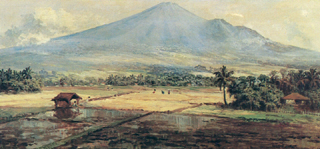
In Indonesia, modern art refers to art that emerged more or less in the 1930s stimulated by influences from Europe. The influence of modernity over traditional, feudal structures in Indonesia is inevitably associated with the Dutch colonists who assumed Indonesian modern art was an inferior copy of their own; but by the late 1930s, this opinion had been dispelled by the exhibitions held by Indonesian artists. European modern art was exhibited in the Bataviaschen Kunstkring, or the Dutch art circle in Jakarta, but modern concepts for art were also filtering into Indonesia through Polemik Kebudajaan or the Polemics on Culture which were being published in periodicals, and the Taman Siswa or Students’ Garden schools. These schools offered progressive education and encouraged the arts, especially painting.
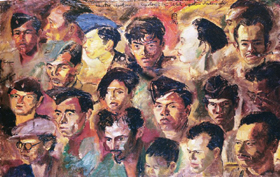
The three who are variously called fathers of modern Indonesian art, Hendra Gunawan, Affandi and Sudjojono, were not from prosperous or cultured families. Sudjojono’s iconic status arose not only from his paintings but from the publication of his ideas, such as his criticism of sentimental landscapes favored by the Dutch. Sudjojono referred to these in an ironic way as ‘Mooie Indie’ or beautiful Indies, a depiction of Indonesia that did not reflect the true conditions of the people.
These artists were committed to independence from the Netherlands. The personal experimentation and innovation which had been intrinsic to the concept of the avant-garde in Western Modernism was less important for them than art that reflected national identity. As a result they favored expressive styles rather than the more avant-garde forms of Cubism, the Bauhaus or Surrealism.
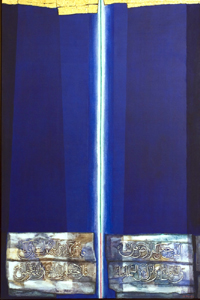
As in the West, Modernism in the visual arts developed in association with the political and social change brought about by economic development and urbanization. This process of modernization was delayed by the Indonesian wars of independence after the Second World War and the violent change of regimes in 1965. Modernization was then controlled by the military, the government bureaucracy and a Chinese entrepreneurial class; the indigenous bourgeoisie, a mark of modernity and the market for modern art, evolved later, in the 1970s.

Modern art was very much a part of the cultural debates surrounding the foundation of the new nation, but these were silenced by radical political changes when the regime of President Sukarno was overthrown and General Suharto replaced him. For the next two decades, until the 1990s, there was an absence of certain content and styles. Graphic and expressive depictions of political and social conditions gave way to art that explored formal and aesthetic propositions – a period that is now described as the depoliticization of Indonesian art. This was in part due to repression and censorship but it was also the result of a growing demand for decoration and art as investment from the prosperous, urban middle class.
Socio/political criticism did not disappear, it went underground, to surface later with the changes modernity brought: international contact, greater communication and an informed younger generation. By 1998, as three decades of the Suharto regime were ending, young Indonesian artists were aware of international artistic trends and, due to the lack of support and outlets for their work at home, sought to exhibit overseas.
Contemporary
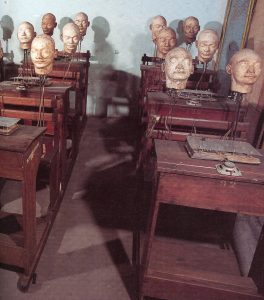
Where the terms, ‘modern’ and ‘contemporary’ have been used interchangeably to mean ‘of the present’, contemporary art was now seen as different from modern art and as having superseded it. By the late 1980s across many cultures there had been a move away from Modernist art towards an art that was involved in contemporary issues, rejected purely aesthetic art and embraced all styles and media. Where Modernism was understood as sequence of period styles that constituted a narrative of modern art history, now, according to theorists, contemporary art rejected the very concept of a master narrative.
Contemporary art reached beyond borders and, through institutions, museums and exhibition structures, made contact with an international audience. Contemporary art was now understood as global art. The pressure to enter a global dialogue was compelling but for many societies that had been physically colonized in the past, it was tempered by a resistance to being dominated by powerful, external cultures. A homogenizing tendency in global culture was undermined at the local level by a desire for recognition of individual identity. These contradictory tendencies were also hypothesized as being characteristics of contemporary art.
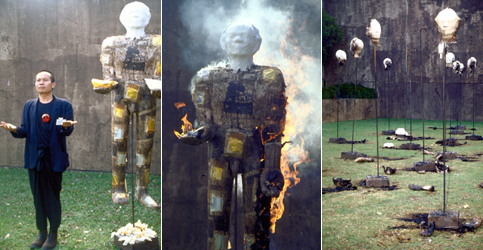
Biennales and large scale international survey exhibitions became a feature of global art. They provided fertile ground for the cross pollination of ideas and styles which contributed to homogeneity of art works, but they also provided an outlet for local issues and characteristics.
Indonesian contemporary artists used the full range of art forms prevalent in global exhibitions such as performance, installation and new digital art, which the Indonesian general public found difficult to understand and for which there was little government or commercial support. A small but energetic number of Indonesian artists selected for exhibition in international exhibition used their work to express criticism of social and political conditions under the Suharto regime and raised awareness of issues that could not be raised at home.